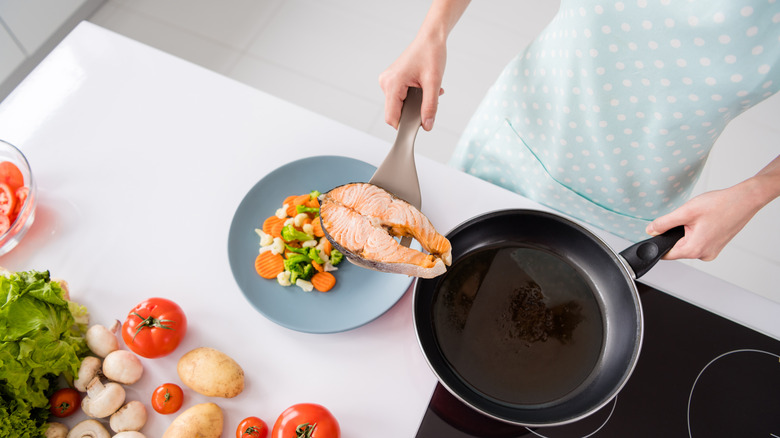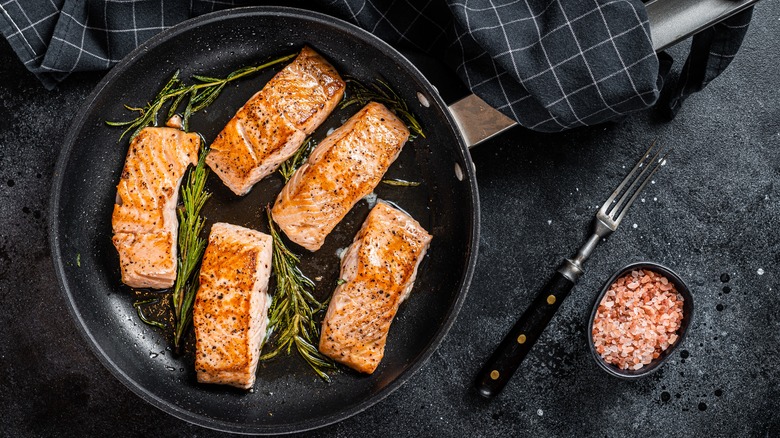Why You Don't Have To Worry About Using Too Much Fat When Cooking Salmon
Fish isn't an easy protein to cook, even for the most experienced culinary pro. It's fragile, finicky, and easy to botch. If you've ever flipped a filet prematurely, you've likely been left with half of it on the spatula and a layer stuck to the pan. If you've ever tried to cook a piece of fish with no fat in the pan... how was that last-minute pizza delivery?
Fat is one of the most important components of cooking. It imparts flavor, greases up any cooking surface, and prevents sticking. In addition, fat fills in any divots in the pan, creating a smooth surface to sear your food (via Science of Cooking). So, in order to properly cook a piece of salmon and leave no flesh behind, the pan needs to be appropriately hot and slick with a layer of fat, per Serious Eats. Skimp on this, and it's an uphill battle that probably won't be won. If you're worried about fat intake, fear not. But why is there no need to worry about the amount of fat you use when cooking salmon?
Science saves the salmon
Per Science of Cooking, complex chemical bonds between the proteins in the salmon and the material of the pan cause the food to stick. Adding oil or fat and heating it to a very high temperature circumvents this issue because the hot fat quickly sears the outside of the salmon and releases water from the filet. This moisture within the salmon begins to boil, resulting in a layer of steam not visible to our eye. The steam slightly elevates the fish from the pan resulting in a seared exterior that slides off the pan. The steam also creates a barrier that prevents the fat from penetrating the salmon.
Your worry should fall more on not having enough fat in the pan and not bringing it up to a high enough temperature. Food & Wine suggests slicking that pan, greasing the grill grates, and even coating that cedar or wood plank — fat is a friend to any hot surface you intend to cook your salmon on.

